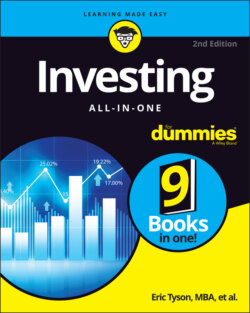Читать книгу Investing All-in-One For Dummies - Eric Tyson - Страница 18
THE DOUBLE WHAMMY OF INFLATION AND TAXES
ОглавлениеBank accounts and bonds that pay a decent return are reassuring to many investors. Earning a small amount of interest sure beats losing some or all of your money in a risky investment.
The problem is that money in a savings account, for example, that pays 1.5 percent isn’t actually yielding you 1.5 percent. It’s not that the bank is lying; it’s just that your investment bucket contains some not-so-obvious holes.
The first hole is taxes. When you earn interest, you must pay taxes on it (unless you invest the money in municipal bonds that are federal and state tax-free or in a retirement account, in which case you generally pay the taxes later when you withdraw the money). If you’re a moderate-income earner, you may end up losing about a third of your interest to taxes. Your 1.5 percent return is now down to 1 percent.
But the second hole in your investment bucket can be even bigger than taxes: inflation. Although a few products become cheaper over time (computers, for example), most goods and services increase in price. Inflation in the United States has been running about 2 percent per year over recent years (3 percent over the much longer term). Inflation depresses the purchasing power of your investments’ returns. If you subtract the 2 percent “cost” of inflation from the remaining 1 percent after payment of taxes, you’ve lost 1 percent on your investment.
To recap: For every dollar you invested in the bank a year ago, despite the fact that the bank paid you 1.5 pennies of interest, you’re left with only 99 cents in real purchasing power for every dollar you had a year ago. In other words, thanks to the inflation and tax holes in your investment bucket, you can buy less with your money now than you could have a year ago, even though you’ve invested your money for a year.
